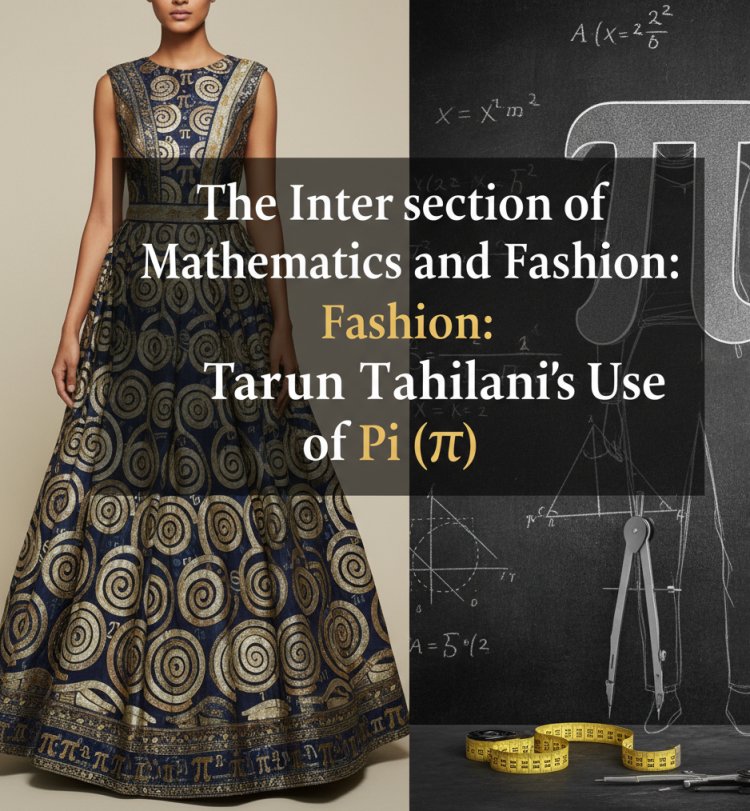The Intersection of Mathematics and Fashion: Tarun Tahilani's Use of Pi (π)
This case examines the criteria for trademark registration under section 9(1)(a) of the Trade Marks Act, 1999, focusing on the distinctiveness of the “Pi logo” adopted by Goodview Fashion Private Limited. The court emphasized that refusals based on lack of distinctiveness must be supported by concrete evidence of third-party use or inherent incapacity, rather than assumptions.

Introduction
In the case of Goodview fashion Private Limited v. The Registrar of Trade Marks, C.A. (COMM.IPD-TM) 18/2025, I.A. 9131/2025 & I.A. 9132/2025, an appeal was filed under section 91 of the Trade Marks Act, 1999 read with Rule 156 of the Trade Mark Rules, 2017, challenging the order dated 31st December, 2024, that refused Appellant’s Application for “Pi logo” in class 42. The Appellant, a Fashion label company, took over Tarun Tahiliani’s studio in 1990 and operates design stores under the label ‘Tarun Tahiliani’ across India for luxury apparel and accessories. The Appellant also runs a website, ‘taruntahiliani.com’, accessible to everyone around the globe. Not only this, the Appellant is highly active in brand collaborations with celebrities for more promotions. The Appellant adopted the Tarun Tahiliani label in 2018, registered in classes 3, 24 and 25. As claimed, the logo enjoyed a reputation and goodwill amongst the general public as seen from the social media pages. The “Pi logo” was adopted by the Appellant in 2018 for its goods/services, and application for the same was filed in class 42 on a proposed to be used basis. The Application was refused by the Registrar on the ground of section 9(1) (a) for not being a distinctive mark. The issue arose here whether the Registrar was justified in refusing registration for the Pi logo for not being distinctive enough under section 9(1) (a).
Arguments-
Appellant –
a) The Appellant stated that the Registrar’s order was arbitrary based on assumption that Pi logo is a common surname/personal name.
b) The Pi logo is inherently distinctive and has no evidence of use by anyone else and for lack of distinctiveness.
c) The Pi logo is registered and published in other classes that reveals its distinctiveness.
Respondent-
The respondent submitted that the matter may be remanded back for deciding it fresh if the court finds it appropriate.
To know more about this you can follow the link below:
Legal view-
Under section 9(1) (a) of the Act, if a mark inherently cannot distinguish goods/services, or it’s commonly used in trade without being a source identifier, it lacks distinctiveness. The court held that the registrar’s refusal was not supported by any reference to third party use or lack of distinctiveness. That the logo was creative and artistic associated with the appellant and not as a surname or personal name as stated before. The order dated 31st December 2024 was set aside, and the application was directed to proceed further for advertisement also. Furthermore, the ruling clarifies that the mere presence of a symbol or logo, such as the “Pi,” does not automatically render it non-distinctive. Instead, the overall context, including the brand’s marketing efforts, consumer perception, and prior use, must be considered. The court’s approach encourages trademark authorities to adopt a holistic view, assessing the mark’s inherent qualities and market recognition rather than relying solely on abstract or hypothetical concerns.
This case also serves as a reminder to applicants that establishing distinctiveness requires proactive evidence, such as consumer surveys, sales data, or media recognition, especially when facing objections based on section 9(1)(a). The Appellant’s success in this appeal underscores the importance of maintaining comprehensive records of use and reputation, which can be pivotal in overcoming objections and securing registration. Overall, the judgment reinforces the principle that creative and artistic marks should be protected unless there is clear, substantiated evidence to the contrary.
Conclusion
The case reshapes the findings for section 9(1) (a) for non-distinctiveness must be backed by evidence by a third party use or inherent incapacity to identify source. Mere assumptions are insufficient and may lead to vague and unsubstantiated refusals. The court’s decision underscores the importance of concrete evidence in trademark disputes, particularly when asserting that a mark is inherently distinctive. The Registrar’s reliance on assumptions that the Pi logo was a common surname or personal name was deemed insufficient. The court clarified that a creative and artistic logo, associated with a well-established brand, can be inherently distinctive if it does not resemble common trade symbols or personal names. The absence of third-party use or evidence of the logo’s generic nature further supported the Appellant’s claim.
Moreover, the case highlights that registration in other classes can serve as an indicator of a mark’s distinctiveness, provided that the mark has been used consistently and has gained recognition. This decision reinforces the need for thorough examination and evidence-based judgments in trademark registration processes.
Ultimately, the court’s ruling promotes a balanced approach, ensuring that creative marks are not unfairly denied registration based on unfounded assumptions. It also clarifies that the burden of proof lies with the Registrar to demonstrate that a mark is non-distinctive through concrete evidence, rather than relying on vague or subjective reasoning. This case sets a precedent that decisions under section 9(1)(a) should be grounded in factual evidence, safeguarding the rights of brands to register marks that are inherently distinctive and capable of functioning as source identifiers.












